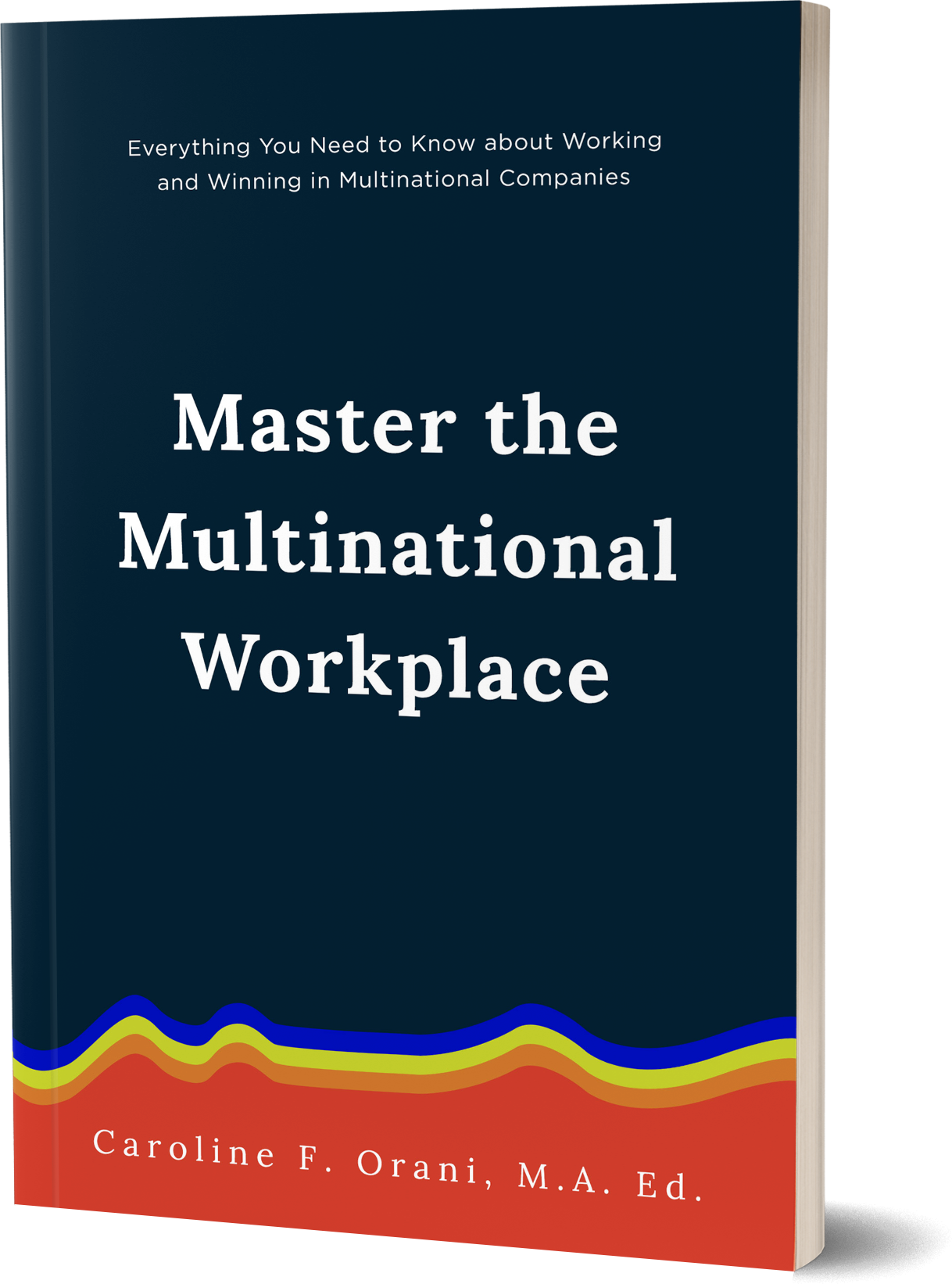5 Easy Steps to the Hiring Process
After 16 years in Human Resources, I have overseen many job hirings for employees. For companies, hiring the right people with the skill sets needed for the job are so important that it justifies spending valuable resources such as time, money and trained people. To look for, assess and choose suitable candidates to join the company is part of the employee selection process and is often under the care of people managers and HR personnel.
Step 1:
The process begins upon submission of the applicant’s resume or bio-data. This, together with other requirements as needed, can be sent via mail or directly given as hard copy to the HR.
Step 2:
This is followed by the HR fact-checking what was written on an applicant’s resume or bio-data. The goal is to confirm that the data are true. It is only when all the information has been verified that the applicants will receive the company’s data sheet.
The company data sheet is a formal document given by the company to the applicant to initiate a relationship. Any information that is not congruent to the verified resume or bio-data is considered misleading information. There is a possibility that the applicants will be dismissed once any misleading information in the company’s data sheet is discovered. To prevent honest
mistakes, the recruitment officer in-charge assists the applicants in filling out the company’s data sheet.
Step 3:
The third process is the administration of psychological tests. This can include time limited intelligence tests and no-time-limit personality tests. According to the Wechsler Adult Intelligence Scale or the Stanford-Binet test, an intelligence test is the measure of intellectual capacity or the potential ability of the person to learn.
As a rule in the administration of psychological tests, intelligence tests are administered to rank and file employees up to supervisory positions only. This is for the company to know the possibility and potential of the applicants to rise to higher posts in the company.
On the other hand, under the process of psychological testing, a personality test is administered to all applicants who pass the first and second process of selection. Psychologists define personality as:
“The particular pattern of behavior and thinking that prevails across time and contexts, and differentiates one person from another. It reveals the character of a person.”
— Psychometrics-success.com
Step 4:
This is the final interview. Here, candidates who have good test results are invited for an actual face-to-face interview or several interviews. During the final stages of interview, the test
results are verified. Sometimes a salary offer is discussed and agreed on by the candidate and the employer with the help of the HR.
Step 5:
The fifth process is the placement. Before placement, candidates for supervisory positions and higher are subject to background investigation to know the maximum truthfulness of the data gathered during the selection process. Sometimes, the result of background investigation is subjective due to crab mentality. Crab mentality is pulling someone down or giving them a bad name. Those who are against the person will provide negative perceptions about the person even if it is not true. On the other hand, those who like the person will give positive attributes just to help the person to be employed. It is expected that decision makers in the hiring of personnel should have a very strong sense of weighing the gathered information before making decisions.
This is the conventional process of selection.
The process for selecting the best applicants is time consuming because usually, it takes two to three months before a decision is made for the supervisory, managerial, and executive level posts.
However, a disadvantage of this is when a “misleading” report of the background investigation comes in late and the employee has already been hired and performing well. In this case, it is difficult to terminate the employment.
When the expertise needed is so rare, there are so few qualified applicants for the job, or the job required is urgent, decision makers also take the risk of considering the applicant even with the misleading background.
Some misleading information are considered acceptable, while some are not. Nonetheless, it is time consuming for the HR to reinvestigate the misleading information.
That is why I also suggest that in many situations, companies can already initiate the investigation process before choosing applicants for the final interview. The rationale here is that it is more efficient to sift any misleading information beforehand so that decision makers can already focus on choosing the right candidate in the final interview. This also lessens the risk of impediments in the selection process.
Do you want to successfully achieve your #CareerGoals?

Honesty is the best Policy
Honesty is the best policy. This adage is very popular in the Philippines. It is taught even in my early years in school. It is said that a person who is honest always wins his battles. A few years ago, I was tasked to handle the recruitment of ...
Demotion: Demoralizing or Not?
Demotion is the movement of an employee from one job to another of lower rating, employment status, or rank. From Schalk and Rousseaur’s perspective on psychological contracts, we know that the effects of demotion on one’s health depends on how we perceive the...
The Challenge of Counseling
Counseling is a specialized skill. If you want to be a counselor, you will need higher formal education because you need both theory and application to sharpen your knowledge. This is one of my learnings in my Master’s degree thesis entitled...

Caroline Orani is the lead consultant at Corporatenuances Publishing and Consulting in the two services being offered –Compensation Structuring Service and Seminar-Workshop on Workplace Success. She is an HR author, publisher, speaker on workplace success, and Compensation and Benefits Consultant. She has 16 years of experience in different industrial settings in Human Resources Training and Management. Rising from the ranks, she has served in various capacities such as Human Relations Manager, Training Manager, Skills Development Manager, Recruitment Manager, and Corporate Social Responsibility Programs Manager.
She is the author of the book Master the Multinational Workplace: Everything You Need to Know about Working and Winning in Multinational Companies. This is an easy-to-read book that talks about thriving in any workplace but with an emphasis in multinational environment. She wrote the book with the belief that the Filipino workforce will find hope that it is still possible to live comfortably in the Philippines. Multinational companies provide outstanding compensation and benefits, and this uplifts the way of living of the Filipinos. She presented in Chapter II the job levels and this chapter talks about the level of difficulty and importance of jobs in the organization. In Chapter VII of the book, she talks about how jobs in the organization are priced. Companies may use the sample provided in creating their own salary structure or may opt to ask the service of the author to do the creation of their salary structure. Assessing, structuring and pricing jobs are unique to every industry. Compensation and benefits include basic pay, incentives and benefits. Pay packages vary based on the financial capacity of the company to pay. Structured basic pay is the end result of the compensation consulting service; incentives and benefits are recommended upon the client’s request. Other areas to have in-depth overview of the ins and outs of a multinational workplace are presented in other chapters. The printed copy of the book is available at National Bookstore and Powerbooks in the Philippines.
For seminars, talks and consultations Caroline can be reached at info@corporatenuances.com. Visit https://www.corporatenuances.com for more information.










I really enjoy this template youve got going on on your internet site. What is the name of the template by the way? I was thinking of using this style for the website I am going to put together for my class project.
The template is copyright 2017 and exclusive to this site only. Cheers!
I am glad to be one of the visitors on this great website (:, thankyou for posting . http://www.piano.m106.com
Thank you for visiting this site. Cheers!
There is perceptibly a lot to realize about this. I think you made various good points in features also. Roseann Nickolaus Keel
Thank you Roseann! Keep reading and be inspired in reading. Cheers!
Do you care if I reference some of this on my page if I include a link to this site?
Yes you can write a phrase from this article in your site as reference. I’ll be grateful that this article be quoted in your site.
Thanks a lot. This is great content. I might share some for you guys too. Great work poster! Ardene Freeland Brinson
I will be very grateful to witness this blog article spreading in the online world. Thank you in advance!
Wow, great blog article. Really thank you! Really Great. Debora Dani Annette
You may want to share this blog article to people you know will need the content of this blog article. Lets work together in spreading quality based blog articles in the online world.
Will try to repeat your mantras every day. Hopefully they will help in my current project. Filippa Cirilo Bricker
Yes. It will really help your current project. Good luck to your project. Cheers!
Pretty! This has been a really wonderful post. Thanks for supplying this information. Delphine Lev Violetta
Thank you! I am so grateful for your appreciation of this read. Read more. I published 14 inspiring blog articles about the world of work in this blog page. https://www.corporatenuances.com/blog page.
I got this web site from my pal who informed me about this website and at the moment this time I am browsing this website and reading very informative articles or reviews here.| Loleta Jaymie Allisan
I am grateful for your pal that this blog article has reached you. Kindly express my sincere appreciation and thanks to your pal. You may want to browse other blog articles in this blog page https://www.corporatenuances.com/blog page for more learning and inspiration. Regards.
I used to be unemployed now I am a cashier and it is something I love.
I wish you success in your work now. You may want to share this blog article to people you know needing the content of this blog article.
Thanks-a-mundo for the blog post. Really thank you! Really Cool. Annelise Werner Isleana
You’re welcome! You may want to share this blog page https://www.corporatenuances.com/blog page to people you know needing information about the world of work.
Its such as you learn my mind! You appear to understand so much about this, like you wrote the guide in it or something. Cristabel Boyce Clovah
Thank you for your sincere appreciation of this blog article. Keep reading, there are more inspiring blog articles about the world of work that you can find in this blog page https://www.corporatenuances.com/blog page.
Great work! Thanks for sharing your achievement and the encouragement. Joice Artur Tanah
Thank you so much! You may want to share this blog article to people you know in need of this information.
Hello. This article was really motivating, particularly since I was browsing for thoughts on this matter last Thursday. Natalina Felice Severson
Thank you. I look forward that somehow this read has helped you in your information searching about this topic. Keep reading!
I loved as much as you will receive carried out right here. The sketch is tasteful, your authored subject matter stylish. nonetheless, you command get bought an impatience over that you wish be delivering the following. unwell unquestionably come more formerly again since exactly the same nearly a lot often inside case you shield this increase. Theo Kalil Halimeda
Grateful of you reading this blog article. Keep reading in this blog page https://www.corporatenuances.com/blog page.
Very cool, some wonderful points! I appreciate you making this post available, the rest of your site is also well done. I hope you have a great day.
Thank you so much for your sincere appreciation of this blog article and this website https://www.corporatenuances.com.
When I view your RSS feed it just gives me a page of weird text, may be the problem on my reader? TY for putting this up, it was very helpful and explained tons.
Our hosting service is updating that time but it happened in a very limited time so you can start reading again in this blog page https://www.corporatenuances.com/blog page. Keep reading.
Hello. impressive job. I did not anticipate this. This is a splendid story. Thanks!
Thank you for taking your time to read this blog article. You may want to share this blog page to people you know. https://www.corporatenuances.com/blog page.
Great article! This is the kind of information that should be shared around the net. Korella Skye Lenore
Thank you for giving the nod of this blog article. I really appreciate! Keep reading. There are more inspiring blog articles in this blog page https://www.corporatenuances.com/blog page.
Dazbet merupakan situs judi online Indonesia terbaik resmi saat ini yang hadir untuk memenuhi kebutuhan pemain judi online dalam bermain dan mencari penghasilan tambahan dengan bermain bersama kami. Dengan perkembangan teknologi yang sudah pesat jaman ini kalian bisa memainkan beragam permainan judi online hanya dengan membutuhkan jaringan internet dan juga gadget kalian, baik itu android, ios, laptop, dan juga pc kalian dimana saja dan kapan saja dengan cukup membuka bandar kami dan bertaruh di dalamnya. Yolanthe Nowell Burnett
Menurut saya belum ada penghasilan tambahan yang pasti dalam bermain judi online karena tidak ada cara pasti untuk menang. Kemenangan hanyalah kebetulan dan tidak ada yang bisa memperkirakan peluang itu. Bagi saya, cara terbaik untuk mendapatkan penghasilan adalah dengan bekerja atau memulai bisnis yang Anda sukai.
In my opinion, there is no sure additional income in playing online gambling because it has no exact ways to win. Winning is just by chance and no one can forecast that chance. For me, the best way to earn is to go to employment or start a business you love to do.
Szata graficzna calkiem wporzadku, przypadly mi do gustu blogowe kolory, podoba mi sie 🙂 zapraszam do siebie…
The graphic design is quite okay, I like the blog colors, I like it 🙂 I invite you to come ..
Dziękujemy za uznanie dla projektu tej strony internetowej. Możesz przejrzeć inne artykuły na blogu opublikowane na tej stronie blogu https://www.corporatenuances.com/blog.
Thank you for your appreciation of the design of this website. You may want to browse other blog articles posted in this blog page https://www.corporatenuances.com/blog page.
i have visited this blog a couple of times now and i have to tell you that i find it quite nice actually. continue doing what youre doing! :p
Thank you for your warm appreciation of this blog article. You may want to share this blog article to friends needing to know the message of this article. Browse more articles in this blog page https://www.corporatenuances.com/blog page.
You seem to be better at keeping out the spammers than I did! Well done!
KUDOS to Bluehost hosting service.
These kind of post are always inspiring and I prefer to read quality content so I happy to finally find many high-quality point here in the post, writing is simply huge, thank you for the post
Thank you for your nice comment. You can find more high quality blog articles in this blog page: https://www.corporatenuances.com/blog page. Happy reading!
I wish to visit Japan in the future.
This is a massive and an very interesting write to check out on this massive website. Never post any replies only now just could not resist
Thank you!
excellent points altogether, you just received a new reader.
What could you recommend about your put up that you simply made some days ago?
Any positive? asmr 0mniartist
For the meantime, keep learning here at https://www.corporatenuances.com/blog page. Cheers!
You are so awesome! I don’t think I’ve truly read anything like that before.
So good to find someone with unique thoughts on this topic.
Really.. many thanks for starting this up. This website is
one thing that is required on the web, someone with a bit of originality!
asmr 0mniartist
Thank you so much for your nice words of our write-ups. Keep learning here at https://www.corporatenuances.com/blog page. Cheers!
I all the time used to study article in news papers but now as I
am a user of net so from now I am using net for posts, thanks
to web. asmr 0mniartist
Grateful that this blog article made you consider studying net posts. Keep that act of commending excellent reads. Cheers!
Excellent beat ! I would like to apprentice even as you amend your web site, how could i subscribe for a blog website?
The account aided me a acceptable deal. I have been a little bit familiar of this your broadcast offered brilliant clear concept 0mniartist asmr
Thank you! For the meantime, keep visiting this site https://www.corporatenuances.com/blog page for more inspiring reads. Cheers!
Hi, its pleasant piece of writing concerning media print, we all know media is a enormous source of data.
0mniartist asmr
Yes, that’s true!
Thank you pertaining to taking turns the following superb subject matter on your website. I came across it on the internet. I am going to check back again if you publish much more aricles.
Thank you so much SEO Directory. This blog page has 14 articles published. Take a look. Cheers!
I do not know if it’s just me or if everybody else experiencing problems with your blog.
It appears as if some of the text within your posts are running off the screen.
Can someone else please comment and let me know if this is happening to them as well?
This could be a issue with my internet browser because I’ve had this happen before.
Thank you 0mniartist asmr
This website https://www.corporatenuances.com is loading fast in all browsers in my area. Cheers!
Hey in which did you obtain this wp layout from? Is it custom made? If so mind sharing your designers get in touch with info?
Custom made. Yes. Cheers!
If you are going for finest contents like I
do, just visit this web site all the time since it presents
quality contents, thanks
Thank you!
I really like looking through a post that
will make men and women think. Also, thank you for permitting me to comment!
Keep learning here at https://www.corporatenuances.com/blog/
Cheers!
Everyone loves what you guys are up too. This type of
clever work and exposure! Keep up the very good works guys I’ve add you guys
to our blogroll.
Thank you!
Tremendous things here. I am very satisfied to peer your article.
Thank you a lot and I am taking a look ahead
to contact you. Will you please drop me a mail?
If you want to increase your knowledge simply keep visiting this web
site and be updated with the latest posts here.
I’m more than happy to uncover this web site. I want to to
thank you for your time for this wonderful read!! I definitely really liked every little bit of
it and I also have you saved to fav to look at new
things in your blog.
Hello to all, as I am actually keen of reading this weblog’s post to be updated regularly.
It contains good stuff.
Great!
Hello there, just became aware of your blog through Google, and found
that it’s really informative. I will be grateful if you continue this in future.
Numerous people will be benefited from your writing.
Cheers!
Thank you!
Just want to say your article is as astounding.
The clearness in your put up is simply excellent and i could suppose you are knowledgeable on this subject.
Fine together with your permission allow me to grasp your
feed to stay updated with coming near near
post. Thank you a million and please keep up the
enjoyable work.
Thank you!
What’s up, I would like to subscribe for this weblog to take most recent updates,
therefore where can I do it please help out.
Our webpage https://www.corporatenuances.com/blog/
I got this web page from my friend who informed me concerning this site and now this time
I am visiting this web page and reading very informative content at this place.
I constantly spent my half an hour to read this weblog’s posts all the time along with a mug of
coffee.
Howdy! Do you know if they make any plugins to protect against hackers?
I’m kinda paranoid about losing everything I’ve worked hard on. Any suggestions?
WordPress blog platform and Bluehost web hosting have security plugins to choose from.
Cheers!
Heya I am for the first time here. I came across this board
and I find it truly helpful & it helped me out much.
Excellent weblog here! Additionally your website so much up fast!
What web host are you using? Can I get your affiliate hyperlink
in your host? I desire my website loaded up as fast as yours lol
Thank you! Here’s the affiliate link https://www.bluehost.com/track/caylie/
This is fantastic blog. A great read. I’ll definitely be back.
Excellent site. A lot of useful information here.
I am sending it to a few pals and additionally sharing in delicious.
And naturally, thank you to your sweat!
Magnificent! Your broadcast offered vibrant transparent idea.
Hey! Quick question that’s completely off topic.
Do you know how to make your site mobile friendly?
My site looks weird when viewing from my iphone. I’m trying to find a
template or plugin that might be able to correct this
problem. If you have any suggestions, please share. Cheers!
Check WordPress blog platform and Bluehost web hosting plugins or ask the assistance of a professional website designer.
Cheers!
What’s up to all, how is the whole thing, I think
every one is getting more from this web site, and your views are
good in favor of new people.
Howdy just wanted to give you a quick heads up.
The text in your content seem to be running off the screen in Firefox.
I’m not sure if this is a formatting issue or something to do with web browser compatibility but I figured I’d post to let you know.
The design look great though! Hope you get the problem solved
soon. Kudos
Check again and it is okay now.
I really like your writing style, excellent info , appreciate it for putting up : D.
Thanks for sharing, this is a fantastic blog article. Much obliged.
Hi everyone!
Are you interested to migrate to Bluehost hosting service? here are the steps:
1. Click this link https://bluehost.com/track/caylie/migration?page=wordpress-site-migration and select your plan and create a bluehost account.
2. Next, go to the migration services page in Bluehost Marketplace, enter the name of the site you plan to migrate, and run a quick compatibility check.
3. Then Bluehost will guide you to Bluehost Migration plugin, where you can start the migration process.
4. After you’ve started the migration, Bluehost team of experts will contact you to help complete it. Then you’ll have the chance to review your site and finalize the transfer.
5. Once your migration is done, you’ll be ready to connect your domain to your website (aka point your DNS).
Why Migrate to Bluehost?
Bluehost is committed to provide WordPress excellence with a wealth of helpful tools and expert guidance to set your website up and running quickly. From the moment you create your account, to when you are finally ready to publish your contents. Bluehost hosting service is the only hosting provider that offers a better all in-one WordPress experience.
Thank you Bluehost for the opportunity to receive affiliate commission for every click of Bluehost link in this blog page and successful Bluehost account creation. Affiliate commission will help this blog page to run continuously for free reading to all visitors. We are satisfied with your product services that’s why we keep on promoting Bluehost.
Brilliant post and useful information.
Hi there! I know this is kinda off topic however Id figured Id ask. Would you be interested in exchanging links or maybe guest authoring a blog article or vice-versa? My website discusses a lot of the same topics as yours and I feel we could greatly benefit from each other. If you’re interested feel free to shoot me an email. I look forward to hearing from you! Fantastic blog by the way!
Please email us at info@corporatenuances.com. Cheers!